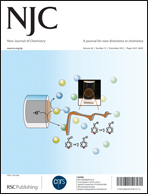Catalytic enantioselective nucleophilic addition of organolithium derivatives: pitfalls and opportunities
Abstract
Organolithium reagents in solution are known to adopt oligomeric structures that are highly sensitive to the presence and nature of additives. In particular, the addition of lithium halides, chalcogenides or pnictogenides leads, in many cases, to well-defined complexes having the effect of decreasing the degree of aggregation of the original oligomer and often increasing the reactivity of the lithiated species itself. Incorporating a stereogenic element through the additive may allow the resulting complexes to be employed in stereochemically controlled reactions. In this context, two strategies can be applied that are the usual picture of a single metal in interaction with σ-donor (non-metalated)


 Please wait while we load your content...
Please wait while we load your content...